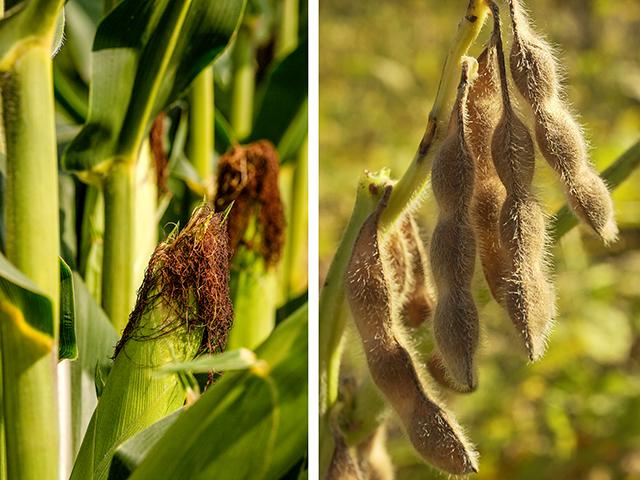Inside the Market
A Fresh Look at 2023 Corn and Soybean Planting Decisions
Now that the 2023 corn and soybean harvests are nearing an end, and equipment will soon be put away for winter, I'd like to discuss this year's group decision to plant more corn at the expense of soybeans. I'm not singling anyone out and readily assume producers know the crops that work best for their farms. However, I also suspect some crop decisions are being made for the wrong reasons.
I've heard many mention crop insurance as the reason farmers favored corn in 2023. For December corn, the February price average of $5.91 offered protection at $5.02 a bushel for 85% coverage, assuming average yields. For November soybeans, the February price average of $13.76 offered 85% protection at $11.70 a bushel, assuming average yields.
Production costs vary widely by farm and by region, but if we use USDA's national average estimates, corn is on track to have an average production cost of $5.13 a bushel in 2023 versus $12.53 a bushel for soybeans. Crop insurance protected 98% of corn's production cost this year versus 93% for soybeans, so the preference for corn had some argument. I would also add that many farmers in the Western Corn Belt with livestock were short on corn in the winter of 2022-23 and were eager to restore supplies. As one manager of two hog operations I recently spoke with in Grand Island, Nebraska, said, "I don't know what hurt more, paying $8 a bushel to feed my hogs or missing out on selling my corn for $8 because I fed it to the hogs."
P[L1] D[0x0] M[300x250] OOP[F] ADUNIT[] T[]
As I write this in late October, December corn is near $4.81, and November soybeans are at $12.97. Of the two, soybean prices clearly have the better chance to trade higher this winter, with ending supplies estimated at an eight-year low of 220 million bushels in 2023-24, while corn supplies are expected to exceed 2.11 billion bushels, the highest in five years.
It's no secret farmers traditionally prefer planting corn. At harvest, they tend to sell soybeans early and patiently store corn -- sometimes too patiently. Historically speaking, that has been an expensive habit, and there are good reasons to get back to a 50/50 rotation. Over the past 34 years, USDA estimates show the average farm price for corn exceeded the average cost of production in 13 years, eight of which took place after the ethanol mandates were established. The same period shows soybean prices had 21 profitable years, also helped by an ethanol market.
Traditions can be difficult to overcome, especially when given an advantage from crop insurance proposals. History shows that sometimes the better solution is as easy as fishing from the other side of the boat.
**
-- Read Todd's blog at https://about.dtnpf.com/…
-- You may email Todd at todd.hultman@dtn.com, or call 402-255-8489.
[PF_1223]
(c) Copyright 2023 DTN, LLC. All rights reserved.



